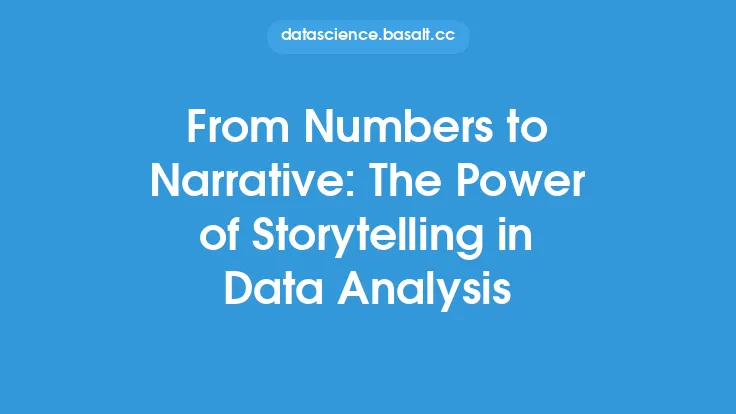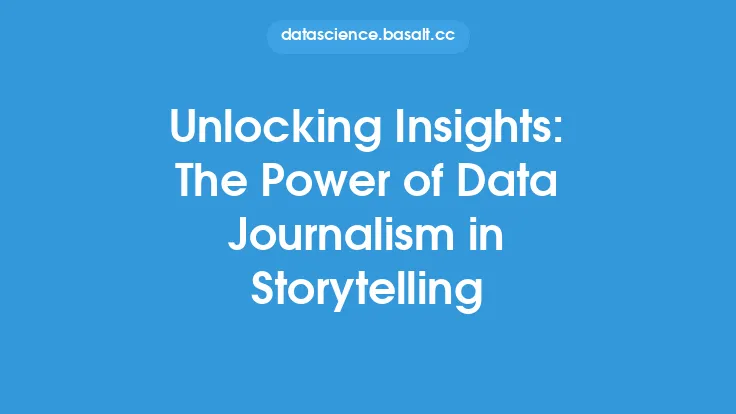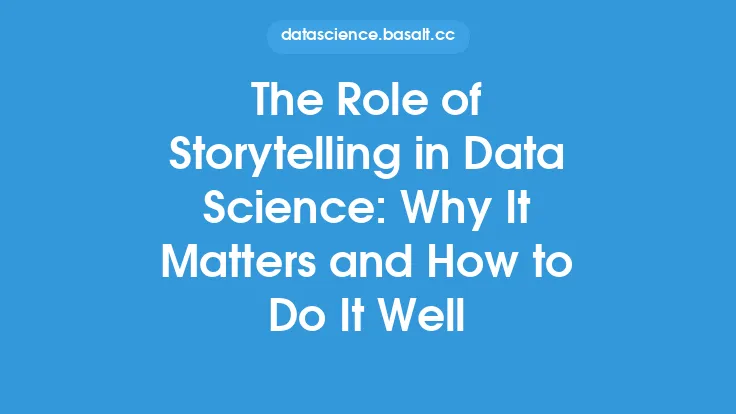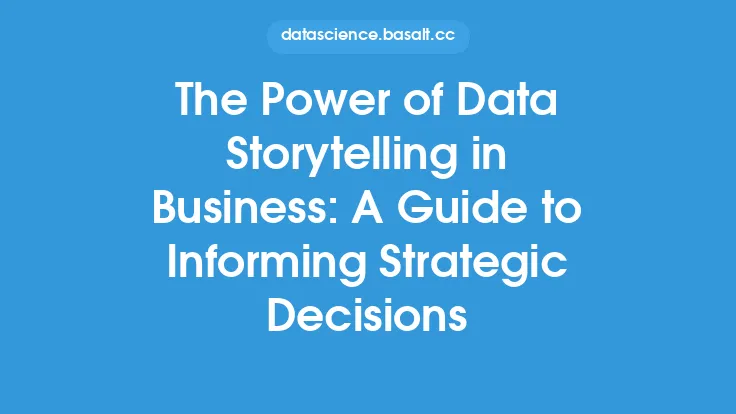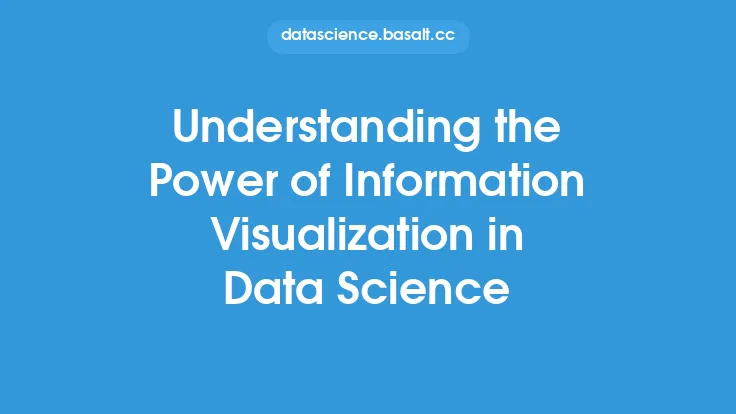When it comes to communicating complex data insights, one of the most effective tools in a data storyteller's arsenal is the analogy. Analogies have the power to make abstract concepts more concrete, allowing audiences to grasp difficult ideas with greater ease. By leveraging analogies, data storytellers can break down complex concepts into relatable and understandable components, making their messages more accessible to a wider range of people.
What are Analogies in Data Storytelling?
Analogies in data storytelling refer to the process of comparing two seemingly unrelated concepts to explain a complex idea or concept. This comparison highlights the similarities between the two concepts, making it easier for the audience to understand the complex idea. Analogies can be used to explain various data-related concepts, such as data structures, algorithms, statistical models, and data visualization techniques. By using analogies, data storytellers can create a mental framework that helps their audience understand and retain complex information.
Types of Analogies in Data Storytelling
There are several types of analogies that can be used in data storytelling, including:
- Physical analogies: These compare complex data concepts to everyday physical objects or experiences. For example, explaining a neural network as a series of interconnected LEGO blocks, where each block represents a node in the network.
- Relational analogies: These compare the relationships between data concepts to familiar relationships in the physical world. For instance, describing the relationship between variables in a statistical model as a seesaw, where one variable goes up, the other goes down.
- Procedural analogies: These compare complex data processes to familiar procedures or workflows. For example, explaining data preprocessing as a recipe, where raw data is the ingredient, and the cleaned data is the final dish.
How to Create Effective Analogies in Data Storytelling
Creating effective analogies in data storytelling requires a deep understanding of the complex concept being explained, as well as the ability to identify relatable and familiar concepts that can be used for comparison. Here are some tips for creating effective analogies:
- Know your audience: Understand who your audience is and what concepts they are familiar with. This will help you choose analogies that resonate with them.
- Keep it simple: Avoid using complex analogies that may confuse your audience. Instead, opt for simple and intuitive comparisons that get the point across.
- Use storytelling techniques: Use narrative techniques, such as metaphors, similes, and anecdotes, to make your analogies more engaging and memorable.
- Test and refine: Test your analogies with a small group of people and refine them based on feedback.
Benefits of Using Analogies in Data Storytelling
Using analogies in data storytelling has several benefits, including:
- Improved understanding: Analogies can help audiences understand complex concepts more quickly and easily.
- Increased engagement: Analogies can make complex concepts more interesting and engaging, which can help to capture and maintain the audience's attention.
- Better retention: Analogies can help audiences remember complex concepts more effectively, which can improve knowledge retention and recall.
- Enhanced communication: Analogies can facilitate communication between data storytellers and their audiences, helping to ensure that complex concepts are conveyed accurately and effectively.
Common Challenges and Limitations of Analogies in Data Storytelling
While analogies can be a powerful tool in data storytelling, there are also some common challenges and limitations to be aware of, including:
- Over-simplification: Analogies can sometimes oversimplify complex concepts, which can lead to misunderstandings or misinterpretations.
- Lack of precision: Analogies may not always be precise or accurate, which can lead to confusion or miscommunication.
- Cultural or personal biases: Analogies can be culturally or personally biased, which can limit their effectiveness or appeal to certain audiences.
- Scalability: Analogies may not always scale well to more complex or nuanced concepts, which can limit their usefulness in certain contexts.
Best Practices for Using Analogies in Data Storytelling
To get the most out of analogies in data storytelling, it's essential to follow some best practices, including:
- Use multiple analogies: Use multiple analogies to explain complex concepts from different angles, which can help to reinforce understanding and improve retention.
- Provide context: Provide enough context and background information to help audiences understand the analogy and the complex concept being explained.
- Avoid mixed metaphors: Avoid mixing different analogies or metaphors, which can confuse audiences and undermine the effectiveness of the analogy.
- Be mindful of audience: Be mindful of the audience's prior knowledge, experiences, and biases when choosing and using analogies.
Conclusion
Analogies are a powerful tool in data storytelling, allowing complex concepts to be explained in a more relatable and understandable way. By leveraging analogies, data storytellers can break down complex concepts into manageable components, making their messages more accessible to a wider range of people. While there are some common challenges and limitations to be aware of, following best practices and using analogies effectively can help to improve understanding, engagement, and retention of complex data insights. Whether you're a data scientist, analyst, or communicator, incorporating analogies into your data storytelling toolkit can help you to convey complex concepts with greater clarity, precision, and impact.
